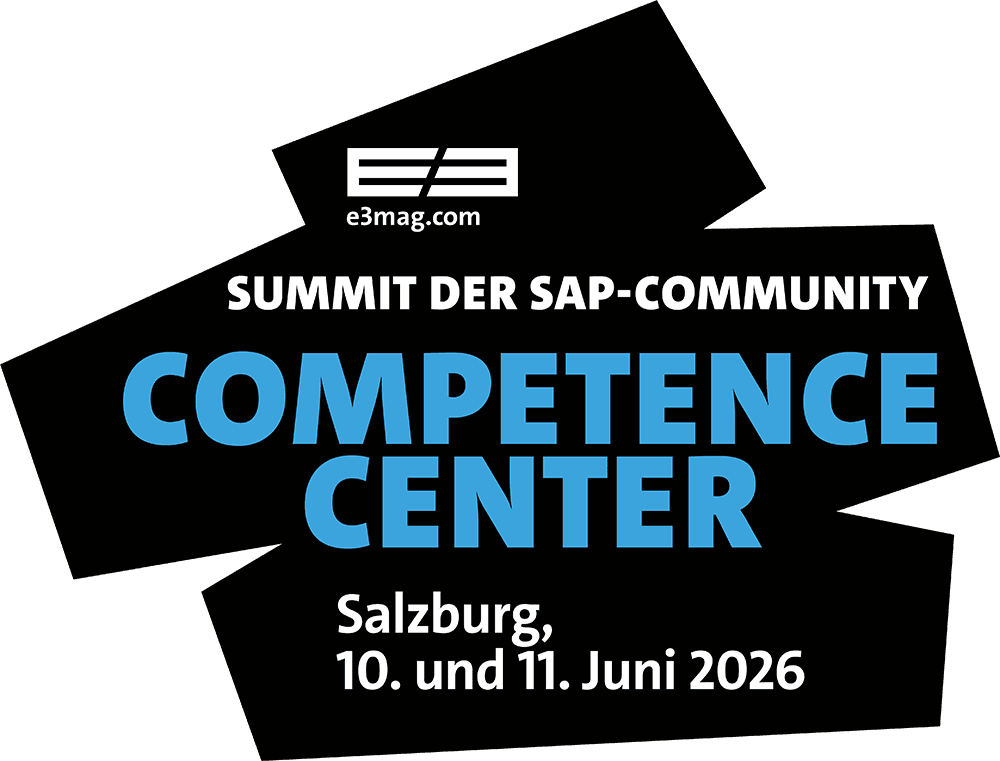Roadmap for AI implementation in SAP


Despite the obvious advantages, many companies face challenges: Data quality, lack of strategy and uncertainties regarding implementation. AI is often only seen as an optimization after the fact instead of being strategically considered from the outset. Time and again, our employees report on projects in which companies are dealing with AI too late and have already lost valuable competitive advantages as a result. Yet now would be the best time to integrate new systems and their AI processes. After all, the current SAP systems will no longer be maintained from 2027. Although an extension to a maximum of 2030 can be achieved with additional financial outlay, the complete update remains unavoidable.
In fact, instead of taking the right leap, updates are sometimes only carried out with what is absolutely necessary. There is a lack of entrepreneurial foresight to directly procure a future-proof solution with competent support. In fact, the integration of AI into SAP systems can usually be implemented without any problems with a well-structured roadmap and can be incorporated into almost all processes.
Status quo analysis
The successful implementation of AI in SAP systems starts with a comprehensive determination of the initial situation. Companies usually find themselves in one of the following three phases, depending on how far their digital transformation has progressed:
Planning phase: This is about strategic preparation and the question of whether and how AI should be implemented.
Transformation phaseThe actual implementation and process adaptation - the company is already in a transformation attempt to implement AI.
Recovery phaseThe attempted AI transformation has failed and the project needs to be restarted.
To begin with, it is necessary to identify those business processes that will benefit most from AI after integration. Logistics, purchasing and finance are often particularly suitable, as they are highly data-driven and can be optimized through automated analyses and forecasts. This point also includes looking at production. After all, with the right integration, errors can be avoided, data quality can be increased and timely machine maintenance can be identified. Most companies currently still have what is known as resource overhead. With the right automation, savings can even be made in sales.
Resistance regularly arises, particularly during this initial step, which is why the integration of AI has not yet taken place. Data protection concerns, security guidelines, a lack of use cases and the fear of being superfluous are the main reasons for postponing the process. Yet we see time and again in projects that companies that overcome these hurdles early on remain more agile and competitive in the long term.
The phases of SAP AI adoption
The first phase is about strategically anchoring AI in the company's processes. This includes defining specific goals, selecting suitable AI tools, taking compliance requirements into account and defining use cases.
Even at this early stage, it is crucial that the IT and specialist departments work closely together. Only if all relevant stakeholders are involved from the outset is it possible for AI applications to be integrated efficiently and seamlessly into existing SAP systems.
Proof of concept and piloting
Strategic planning is followed by the implementation of an initial pilot project. This involves selecting a clearly defined business case that sets realistic expectations regarding the benefits and feasibility of AI. The pilot project serves as the basis for further integration at a later stage.
Iterative tests help to identify and adapt errors at an early stage. At the same time, training courses are held to familiarize the workforce with the new technology. One AI specialist in our team describes it like this: "AI is not just a technological issue, but also a cultural one. Without the right mindset, it will be difficult to fully exploit the potential."
The main issues to be considered are prejudices against artificial intelligence, but also the supposed threat it poses. In most cases, AI scares users because it "takes over processes" or they simply lack confidence. This makes it all the more important to address these objections and demonstrate that AI is a good assistant that offers consistency, system stability and efficiency, but does not replace or restrict anyone in their task.
Scaling and integration
As soon as the pilot phase has been successfully completed, scaling will follow. This involves extending proven use cases to other areas of the company right up to the central level.
A key success factor is adapting the IT architecture. Companies that already use cloud technologies can integrate AI tools more quickly and efficiently. If not already in place, a corresponding cloud structure must be created. Constant monitoring is carried out throughout the entire process of adapting the architecture to ensure that the AI applications deliver the desired benefits in the long term. To ensure that the process is beneficial, there are a number of tried-and-tested recommendations that need to be taken into account during the adoption process.
AI is not a one-off implementation, but a continuous innovation process. Companies should therefore choose agile methods to regularly adapt and further develop their AI strategy.
Measurability through clear KPIs
The success of AI must be measurable at all times. It is therefore essential to define clear KPIs that evaluate the benefits and efficiency of AI applications. This enables companies to continuously optimize and get the maximum added value from their investments.
An often underestimated aspect of AI adoption is change management, basically the preparation of the company as a whole for the planned change. Resistance within the workforce can only be overcome through targeted communication strategies and training. Successful change management ensures that employees not only work with the new technology, but also consciously use it and actively develop it further.
How the transformation succeeds
The integration of AI into SAP systems has long since ceased to be a topic for the future. Rather, it is a current challenge that needs to be addressed. Companies that rely on AI at an early stage benefit from more efficient processes, better-informed decisions and improved competitiveness.
One of our employees sums up what he is confronted with on a daily basis: "The future of SAP lies in the cloud and in the networking of standardized processes with AI. Companies need to adapt to this now in order to remain competitive in the long term."
To make the transformation a success, companies should take action promptly and prioritize the following measures:
Strategic planningDevelop a clear AI strategy at an early stage and evaluate relevant use cases for your company.
Competence buildingCreate internal expertise by building a specialized AI team or working with experienced partners.
Implement pilot projects: Start your first AI initiatives to gain insights and develop practical solutions for widespread use in your company.
If you follow these steps consistently, you will lay the foundation for sustainable and successful AI integration into your own SAP systems.





